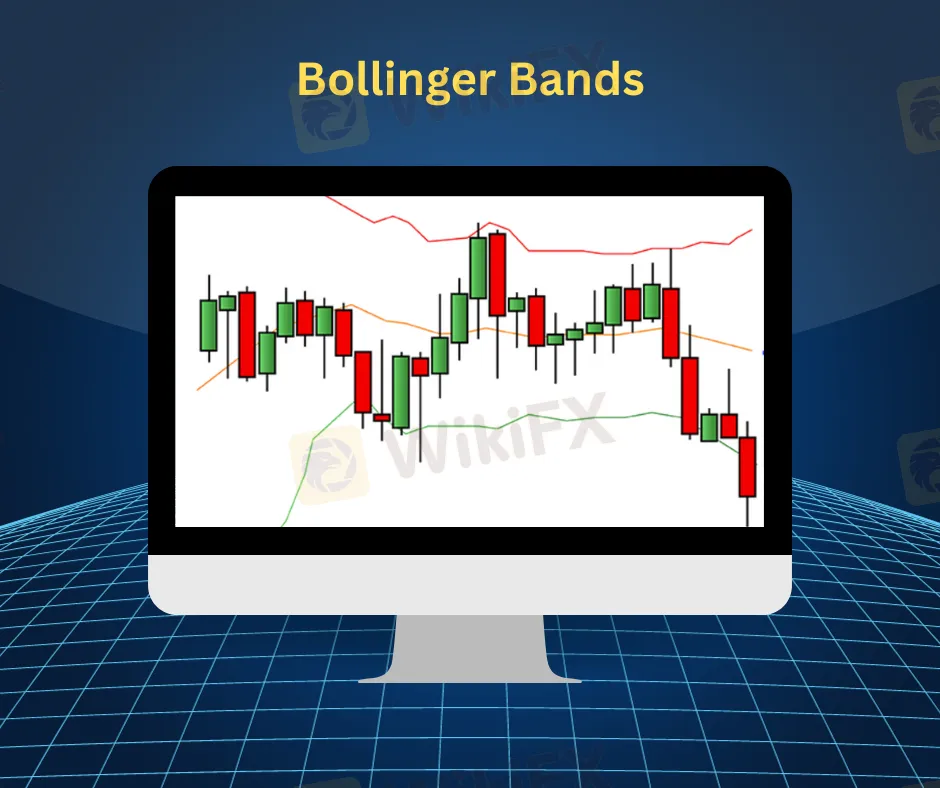简体中文
繁體中文
English
Pусский
日本語
ภาษาไทย
Tiếng Việt
Bahasa Indonesia
Español
हिन्दी
Filippiiniläinen
Français
Deutsch
Português
Türkçe
한국어
العربية
5 Useful Indicators for Traders
Abstract:Unlock the power of five key indicators that can revolutionize your trading strategy and guide your decisions in the dynamic world of finance.

In the world of trading, having the right tools at your disposal can make all the difference between success and struggle. Indicators serve as a guiding light, providing traders with valuable insights into market trends and potential price movements. Among the multitude of indicators available, here are five that stand out for their usefulness in aiding traders in making informed decisions.

A cornerstone of technical analysis, moving averages help smooth out price data over a specified period, presenting a clearer picture of the trend's direction. Traders often use the crossover of different moving averages, such as the simple moving average (SMA) and the exponential moving average (EMA), to identify potential entry and exit points.

The RSI is a momentum oscillator that measures the speed and change of price movements. It oscillates between 0 and 100 and is particularly useful in determining whether an asset is overbought or oversold. Traders use RSI to spot potential reversals or confirm the strength of a trend.

Developed by John Bollinger, these bands consist of a simple moving average and two standard deviations plotted above and below it. Bollinger Bands help traders gauge volatility and identify potential areas of support and resistance. When the price touches the upper band, it might signal overbought conditions, while touching the lower band could indicate oversold conditions.

MACD is a trend-following momentum indicator that shows the relationship between two moving averages of a security's price. Traders utilize the MACD line and signal line crossovers to identify potential shifts in momentum and trend direction.

Based on the Fibonacci sequence, this tool helps traders identify potential support and resistance levels. It uses key ratios derived from the sequence to highlight levels where the price might reverse or consolidate during a trend.
While these indicators offer valuable insights, it's crucial to emphasize that success in trading is not solely dependent on their usage. Traders must exercise caution and understand that achieving success in trading is essentially risk management. Indicators serve as a guidance tool, aiding in decision-making, but they should be complemented with a thorough understanding of market dynamics and risk assessment. Knowing when to enter or exit a trade and managing risk effectively are paramount in achieving long-term success in the financial markets.

Disclaimer:
The views in this article only represent the author's personal views, and do not constitute investment advice on this platform. This platform does not guarantee the accuracy, completeness and timeliness of the information in the article, and will not be liable for any loss caused by the use of or reliance on the information in the article.
Read more

WikiFX Gala Night Malaysia Concludes Successfully
On June 27, 2025, WikiFX Gala Night Malaysia came to a successful close. The event focused on FinTech trends in Southeast Asia and the development of a compliant forex ecosystem, bringing together premium brokers, industry KOLs, payment technology providers, and local IB representatives from Malaysia, Singapore, Indonesia, the Philippines, and beyond to delve into forex opportunities in the new phase.

The Dollar Keeps Falling: How Should We View Exchange Rate Volatility?
The U.S. dollar continues to weaken, triggering ripple effects across global markets. Beneath the currency’s depreciation lies a deeper crisis in its credibility, institutional foundation, and global financial status.

Are Trading Courses and Mentors a Fast Track or a Financial Trap?
In recent years, trading has become more popular than ever. Social media is full of people showing off their “trading lifestyle” with expensive cars, luxury holidays, and promises of easy money. Many of them claim to be mentors, investment coaches, or run online trading academies. They say they can turn beginners into full-time traders in just a few weeks. But is it true, or is it just a clever scam?

Gold Prices Pull Back, Near Four-Week Low Amid Easing Risk Sentiment
As risk aversion fades and investors turn their attention to U.S. inflation data, gold prices retreat sharply, falling to their lowest levels in nearly a month.
WikiFX Broker
Latest News
Stablecoins go mainstream: Why banks and credit card firms are issuing their own crypto tokens
The Dollar Keeps Falling: How Should We View Exchange Rate Volatility?
Asia-Pacific markets rise as investors parse a slew of data releases
Asia-Pacific markets mostly rise as investors parse a slew of data releases
Are Trading Courses and Mentors a Fast Track or a Financial Trap?
At 20 years old, Reddit is defending its data and fighting AI with AI
Debt is a growing force' influencing jobseekers' choices, career expert says. Here's how
Gas prices are expected to fall: It's going to be the cheapest summer since 2021,' one expert says
The Economy - And Its Future - In Four Charts
Use the 80-10-10' rule to know if you've found the right house, says real estate agent of 10 years
Currency Calculator


